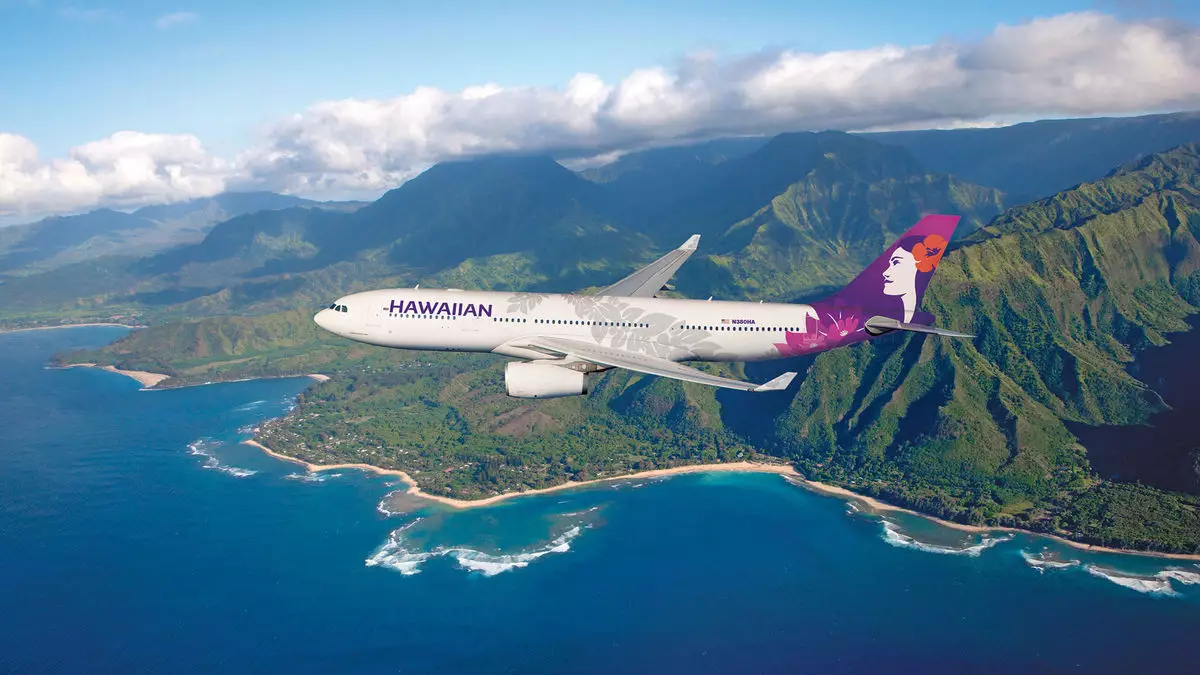The recent merger between Alaska Airlines and Hawaiian Airlines marks a significant shift within the airline industry landscape. As part of Alaska Air Group, Hawaiian Airlines is emerging from a tumultuous financial period, exacerbated by natural disasters and reduced international travel demand. The devastating Lahaina wildfires in Maui considerably impacted Hawaiian Airlines, leaving it struggling to recover as it faced decreased market activity, particularly from Japan. The infusion of stability that comes with being part of Alaska’s robust infrastructure might just be what Hawaiian Airlines needs to regain its footing.
Industry analysts suggest that the essential motivation behind this merger is not merely to enhance operational efficiencies or economies of scale, but rather to offer Hawaiian Airlines a much-needed financial safety net. According to George Ferguson, a prominent aviation analyst, the primary focus for Alaska in this acquisition lies in providing Hawaiian with a stronger balance sheet. This strategy indicates a willingness to invest not only in Hawaiian’s operational capabilities but also in restoring its market presence.
Brett Snyder, an established airline analyst and author of the Cranky Flier blog, emphasized that while this merger may not drastically alter the overall competitive dynamics of U.S. airlines, it will significantly enrich the travel experiences of consumers in Hawaii. The integration of networks means that passengers can now enjoy seamless travels without necessitating multiple carriers for connecting flights from the Islands to the mainland U.S.
Looking ahead, the acquisition opens doors for Alaska Airlines to explore new markets and potential long-haul flights, especially with Hawaiian’s diverse fleet including widebody aircraft. Snyder predicts that Alaska Airlines may initiate transoceanic services departing from its hub in Seattle. This could mark an evolution in Alaska’s service offerings, allowing the airline to venture beyond its established short-haul network.
However, the road ahead is not without its hurdles. While Alaska Airlines is known for its operational efficiency, the integration process of Hawaiian’s fleet presents a significant challenge. As Ferguson points out, the introduction of varied aircraft types – both widebody and narrowbody from Airbus and Boeing – introduces a degree of complexity that could test Alaska’s ability to manage costs and operational productivity effectively.
Ultimately, the merger of Alaska and Hawaiian Airlines represents a strategic alliance that holds promise for both entities. While Hawaiian Airlines stands to gain from the support and stability of a financially secure parent company, Alaska Airlines could leverage this acquisition into new growth opportunities. Together, they create a formidable presence in air travel, capable of enhancing connectivity for travelers in Hawaii and the U.S. mainland. The successful execution of this merger will determine how well these airlines can navigate the unique challenges posed by such an integration, setting the tone for their future trajectories in the volatile airline industry.


Leave a Reply